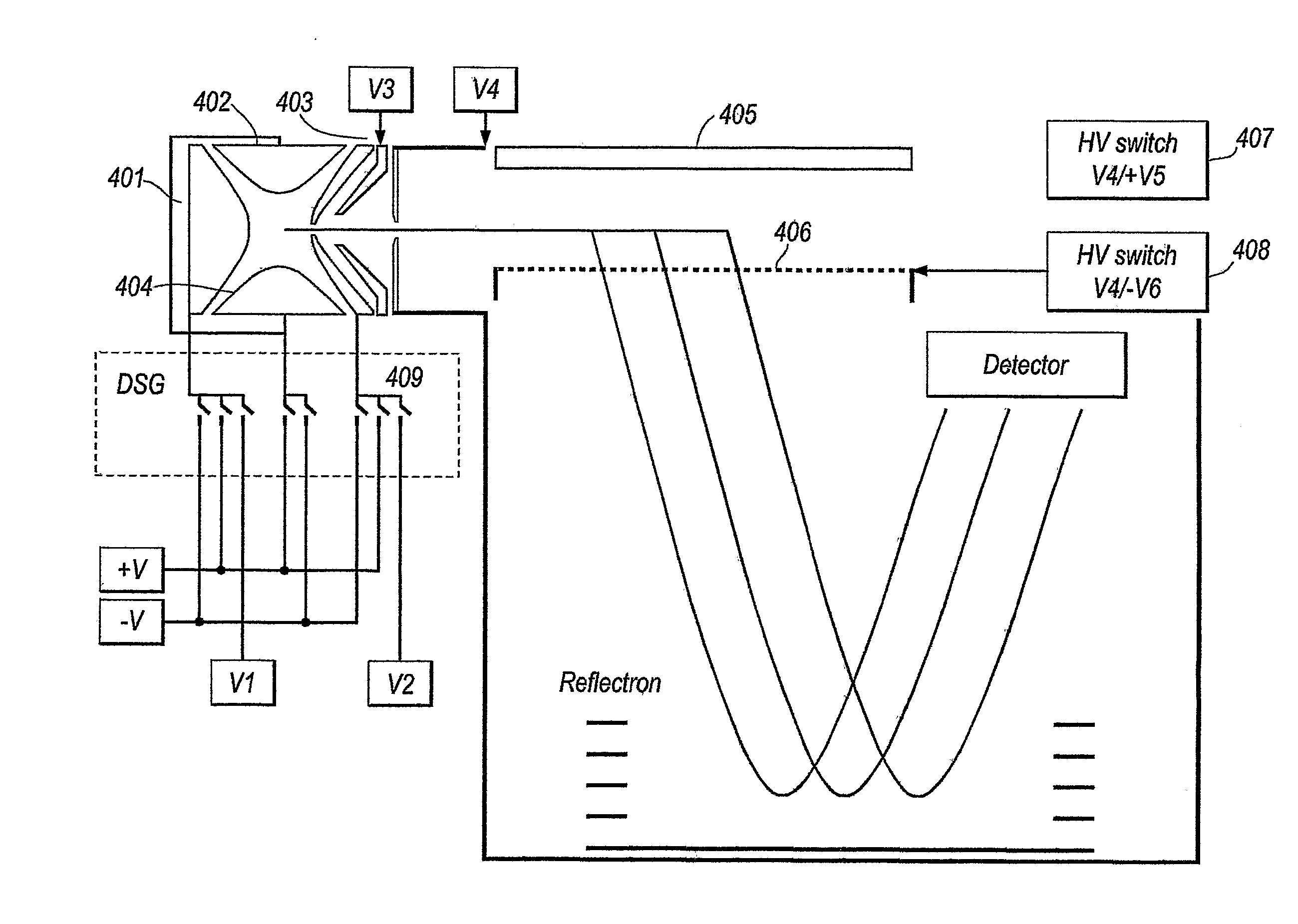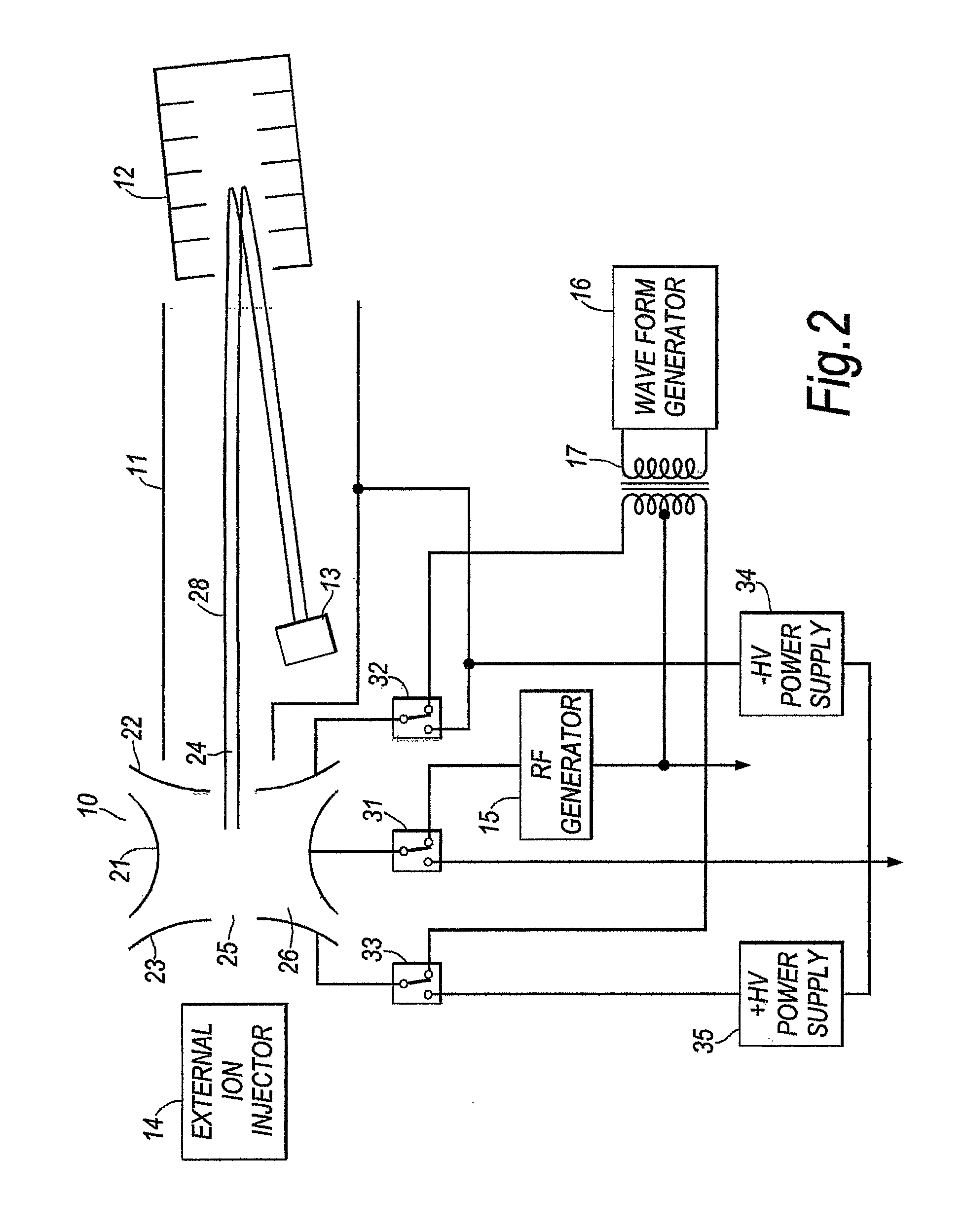Tandem Ion-Trap Time-Of-Flight Mass Spectrometer
a mass spectrometer and time-of-flight technology, applied in mass spectrometers, particle separator tubes, isotope separation, etc., can solve the problems of inability to teach how to achieve this in practice, inability to efficiently eliminate the turn-around time, and hardly possible optimisation, so as to reduce the overall cost of instruments and simplify electronics
- Summary
- Abstract
- Description
- Claims
- Application Information
AI Technical Summary
Benefits of technology
Problems solved by technology
Method used
Image
Examples
Embodiment Construction
[0036] Referring to FIG. 1 there is a block diagram of a tandem IT-TOF mass spectrometer including the ion source, means to transmit ions into the ion trap and time-of-flight mass spectrometer. The ion source is positioned external to the ion trap. Ions can be generated in the ion source by any of the methods known in the art. In particular the electrospray ion source and MALDI are most commonly used for ionisation of molecules of biological nature. Ion source can operate at elevated pressure and ions are collected from ion source and transmitted through regions of differential pumping into the ion trap with the help of RF ion guides. Ions are manipulated inside the trap and prepared for mass analysis using TOF.
[0037] IT-TOF tandem can be built on the basis of 3D trap. Configuration of such instrument with ejection of ions out of the trap directly into the TOF flight path is presented on FIG. 2. However, such configuration suffers from low introduction efficiency mass discriminatio...
PUM
 Login to View More
Login to View More Abstract
Description
Claims
Application Information
 Login to View More
Login to View More - R&D
- Intellectual Property
- Life Sciences
- Materials
- Tech Scout
- Unparalleled Data Quality
- Higher Quality Content
- 60% Fewer Hallucinations
Browse by: Latest US Patents, China's latest patents, Technical Efficacy Thesaurus, Application Domain, Technology Topic, Popular Technical Reports.
© 2025 PatSnap. All rights reserved.Legal|Privacy policy|Modern Slavery Act Transparency Statement|Sitemap|About US| Contact US: help@patsnap.com



